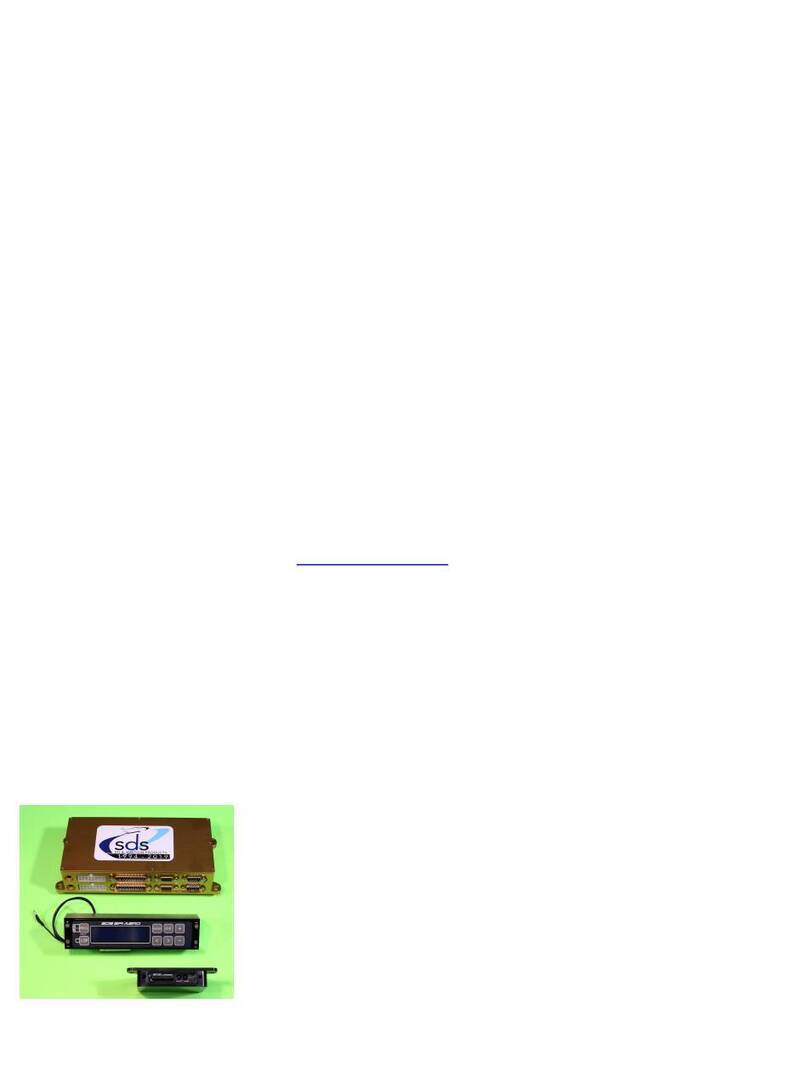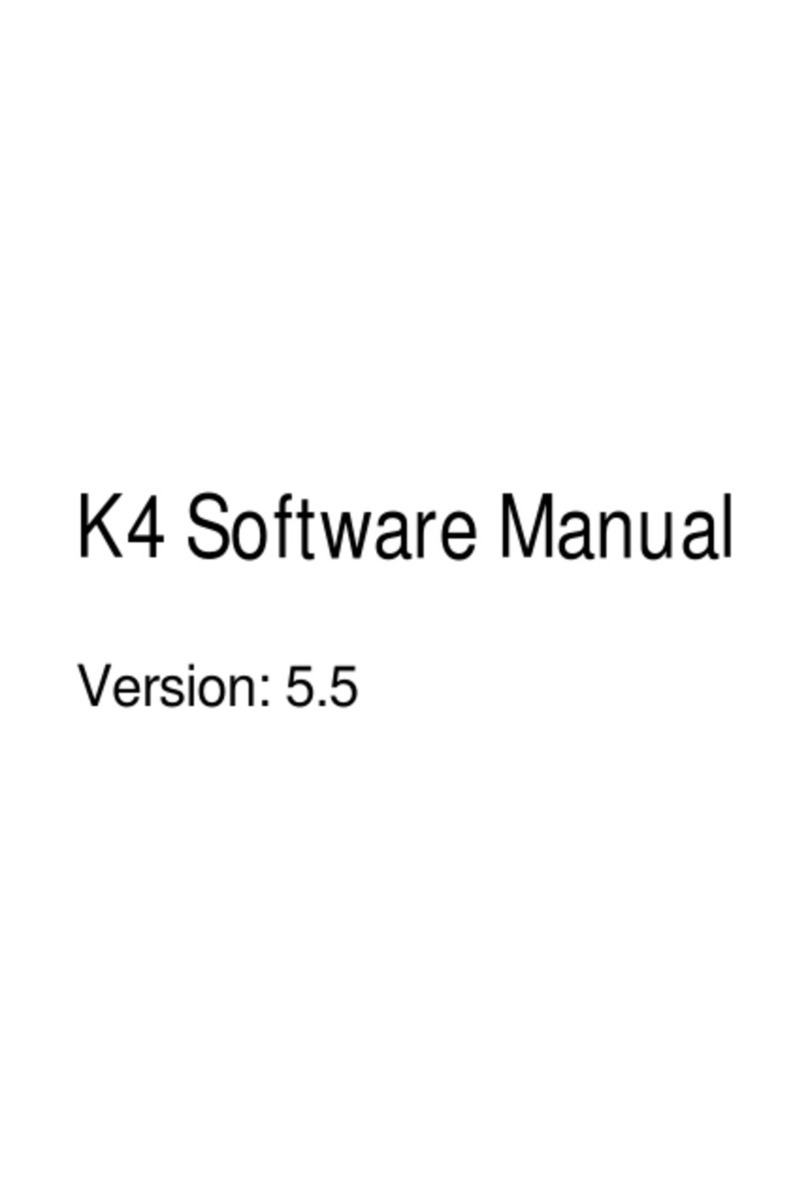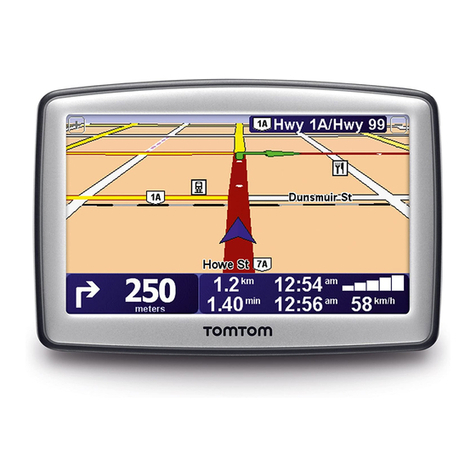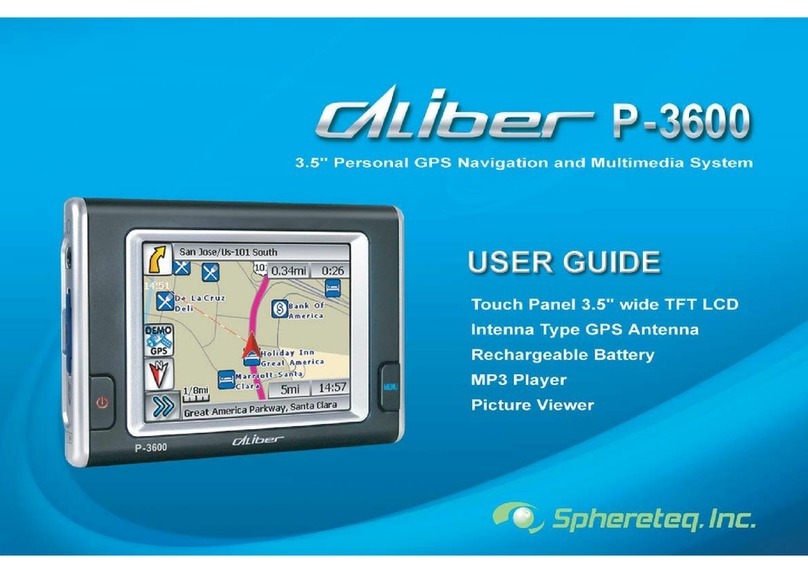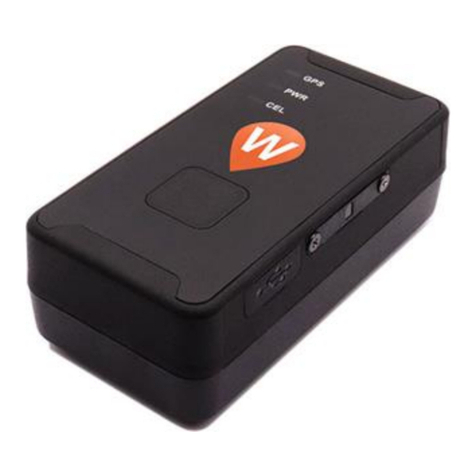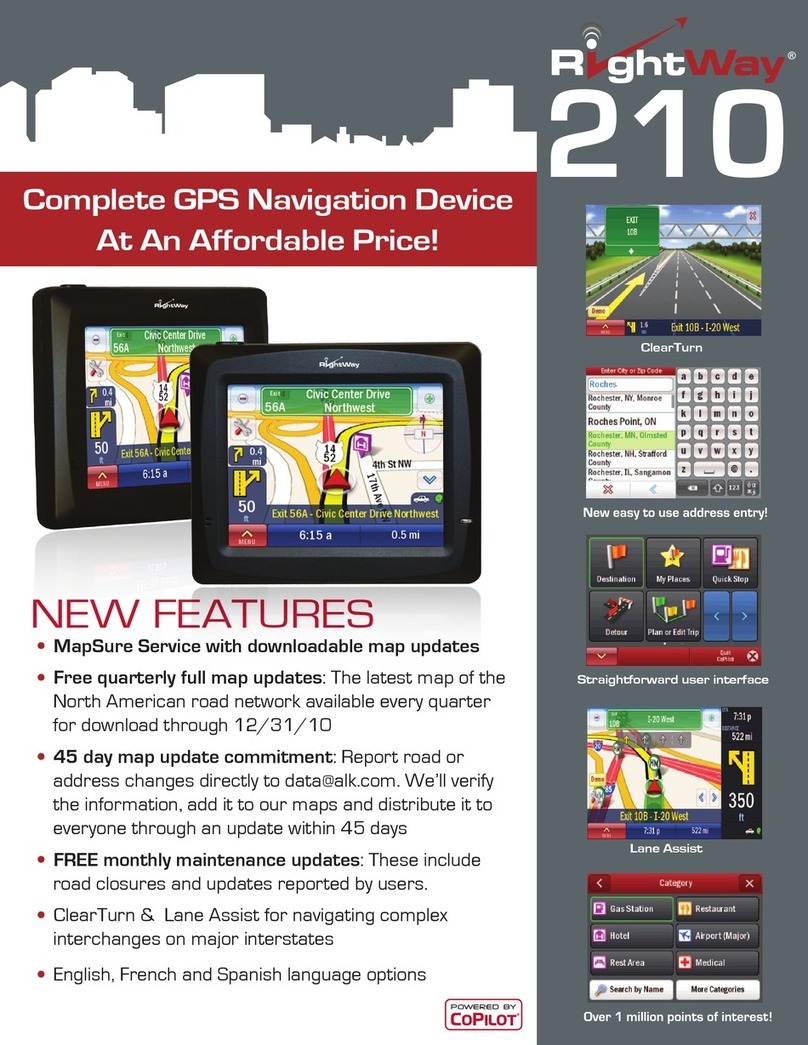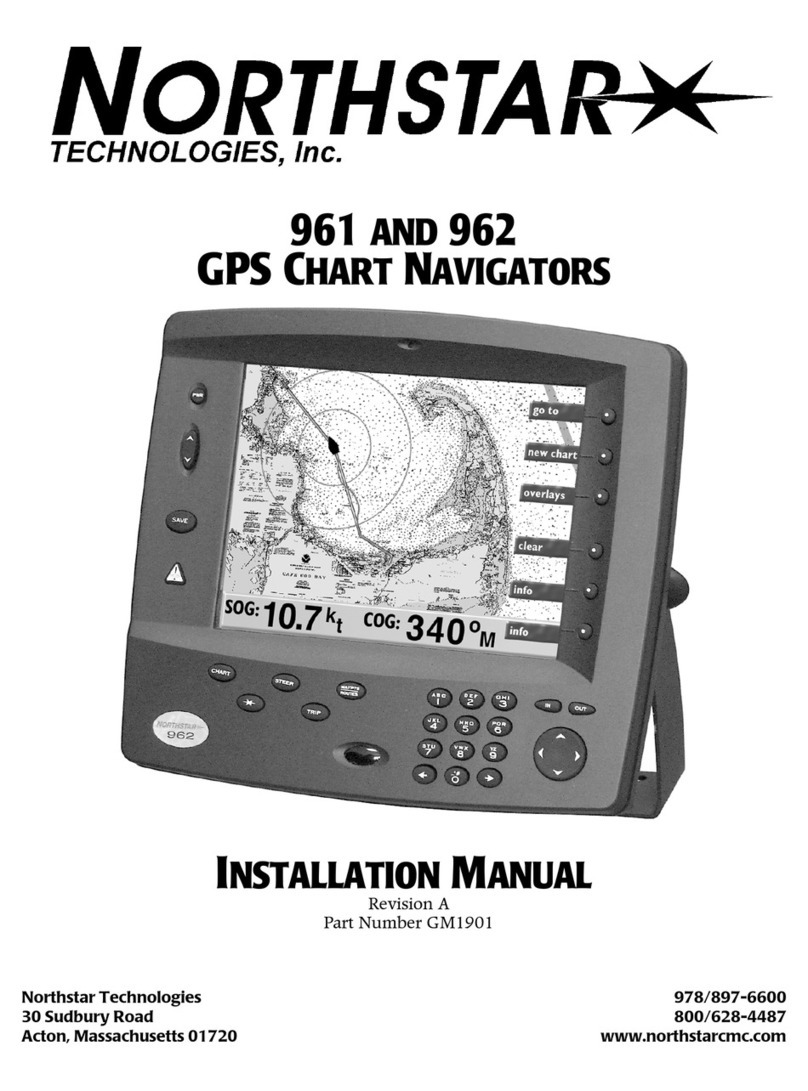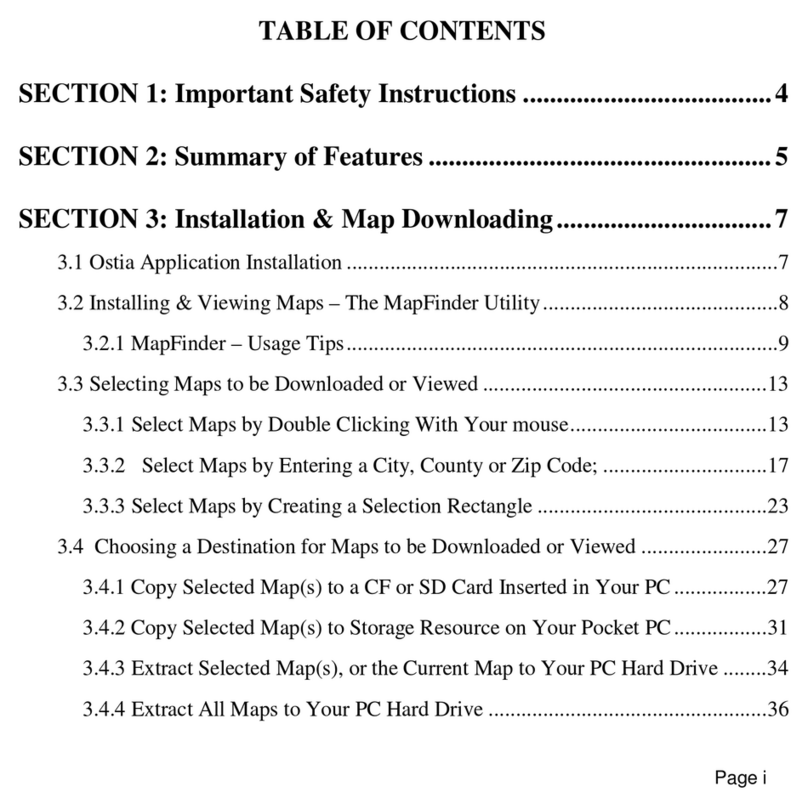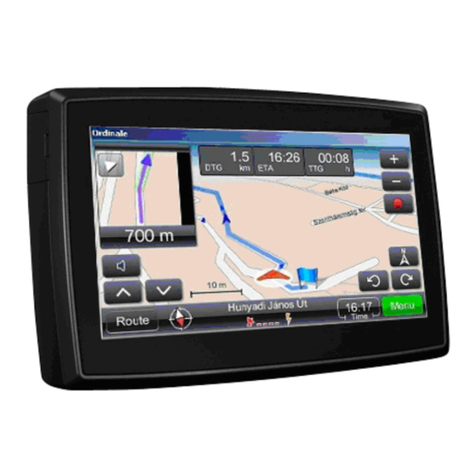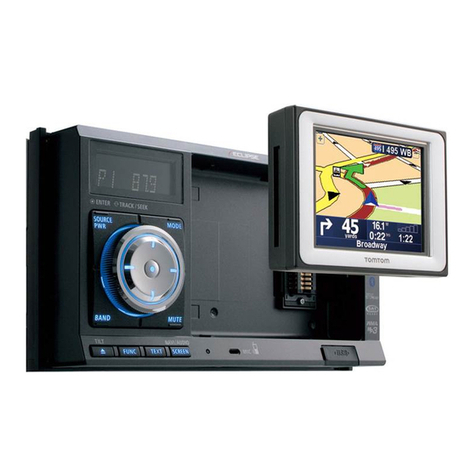SDS EM-5-D User manual

1
EM-5 Aviation Installation and Tuning Manual for Version 31 Software.
Fuel Injection Portion.
May 12/20.
Disclaimer
These products do not conform to any recognized set of standards or certifications for
aviation applications.
This ECU is not waterproof and will not function as designed if moisture invades the enclosure
or power/ ground connections are interrupted.
Failure of this unit may result in a complete loss of engine power.
Use of these products on amateur built/ experimental aircraft is at the discretion of the buyer
who accepts full responsibility for any consequences resulting from its use. Since Racetech
Inc. cannot control the installation, programming, application environment or use of its
products, we accept no responsibility for damage, loss or personal injury resulting from the
use of SDS products. By using SDS products, the user understands and accepts this.
If any user does not agree to this disclaimer, they may return the system/ parts in new
condition for a full refund.
*********************************************************************************************************
Please read the entire manual before attempting any hookup or running of the system.
Due to the technical nature of this system, we have broken down the information into various separate
manuals to make the information easier to find and update. This manual covers the fuel injection
portion of the installation.
help please let us know which system you have. See below for descriptions of different systems.
System Description
SDS EM-5 is available in 2 different models for aviation applications:
EM-5-D controls fuel injectors only.
EM-5-F controls fuel and ignition timing using multiple ignition coils.
EM-5 is a microprocessor based, digital, programmable EFI system intended to control port type injectors. The
EM-5 allows you to access all points in the engine operating map with the engine running and alter them
according to your own specific needs utilizing a hand-held or panel mounted LCD programming box. As such,
the system can be used on virtually any engine type or displacement

2
New for Version 31 Software
V31 and higher software now allows RPM Fuel values to be adjusted up to a maximum of 350, prior to
V31 max was 255. Also V31 can now produce an injector pulse width up to 65mS where older
versions only went to 32mS. This can benefit some applications with relatively large engine cylinder
displacement combined with a lower flow rate injector, which then may require an RPM Fuel value a
bit higher than 255.
Theory of Operation
Air temperature, CHT (or coolant temperature), manifold pressure, throttle position and rpm are all
measured and taken into account by the EM-5 which determines how often and how long the injectors
remain open. The EM-5 generates a precise triggering pulse, which is fed to the injectors. The
manifold pressure value multiplied by the rpm value determines the primary pulse width. Barometric
compensation in V29 software also corrects AFR with altitude behind the scenes, regardless of MAP.
Fuel System
In order for any EFI system to function properly, an adequate supply of fuel at the proper pressure
must be present at the injectors. Problems are invariably blamed on the electronics when in fact 99%
of all running problems are due to mechanical deficiencies. Most running problems are due to poor
electrical connections or insufficient fuel supply/ pressure issues. Failure to follow proper fuel
system recommendations and layout can cause a partial or complete power loss.
Any fuel system design must ensure that fuel feeds from the tanks to pump inlets at all times
during normal flight conditions including uncoordinated flight at high bank angles.
Injectors
We supply properly sized and matched injectors for your application. You should consult us if you plan
to use different injectors for some reason. Improperly sized or matched injectors can create
running or tuning problems and our mapping recommendations may not be valid. Undersized
injectors can cause engine damage in extreme cases.

3
Fuel Pressure Regulator
We supply either an adjustable Borla regulator with AN-6 fuel fittings or a non-adjustable OEM type
with O-ring sealed inlet and either barb outlet or 1/8 or ¼ female NPT outlet fitting. We recommend
the adjustable type have its fuel pressure set to 45-50 psi using the adjusting screw on the top of
the regulator with the engine not running. Both regulator types have a MAP reference hose port for
connection to intake manifold vacuum. Using other unproven regulators is not recommended as
failure can cause partial or complete power loss. The adjustable regulator should be rigidly
mounted to the firewall.
Non-adjustable and AN6 adjustable fuel pressure regulators
Fuel Pumps
We recommend using only the supplied/ recommended genuine Walbro pumps to ensure maximum
reliability and safety with regards to re-priming in the event of a dry tank condition and to be sure they
are properly matched to the hp of your engine. The use of other brands is not recommended as
failure can cause a partial or complete power loss condition.
We can supply either a single pump or dual pumps mounted in a module to allow easier plumbing and
mounting. Be sure to follow the safety/ assembly instructions that come with the pump
modules. Improper fitting assembly can cause line or pump blockage, leading to a partial or
complete power loss. Dual pumps should have separate power feeds, breakers and ground points
for maximum redundancy. Fuse each pump with a 15 amp fuse or breaker. Nominal current draw is
between 4.5 to 5.5 amps each at 14V, running at 45 psi pressure, depending on pump model.
Dual fuel pump module
On low wing aircraft, we recommend the pumps be mounted as low as possible on the floor,
preferably parallel to the floor. If you must mount the pumps vertically, mount them with the
outlets facing UP, never down. Inlet lines to the pumps should be 3/8 inch or AN6 with a minimum
number of fittings used. We recommend not using any 90 degree fittings if possible on the pump
inlets. Pump inlets should preferably be flooded by fuel at all times.

4
Never place fuel pumps close to any hot engine parts unless they have proper heat shielding/
cooling.
Fuel Lines
Fuel lines from the fuel tanks to fuel selector and pumps may be rigid aluminum or steel tubing or
Teflon lined, stainless steel braided flexible hoses. Flexible hoses must have a conductive inner
liner designed to limit static electricity buildup when carrying gasolines.
Fuel lines between the airframe and engine must be flexible types of at least medium pressure rating
(over 100 psi burst strength). Never use rigid line between the airframe and engine which can
lead to vibration breakages and fire hazard. Never place fuel lines close to any hot engine
parts unless they have proper heat shielding.
Some installations will route fuel from the pumps to a fuel block, then use separate braided hoses to
connect to each injector boss. In this case, fuel from the pump enters on end of the block and return
fuel exits the regulator on the other end of the block. Other installations will use a rail or loop type
system where each injector is linked in series to each other. In this case, fuel from the pump enters
the first injector and Tee fittings on each injector boss routes fuel to each remaining injector in turn.
The regulator is placed after the last injector in the loop and fuel is returned to the selected tank
through a Duplex fuel selector.
Fuel block with non-adjustable regulator Fuel block and template for rear baffle mounting
Top engine mount fuel block
You must use fuel return lines with SDS EFI. Fuel return lines have little or no pressure present.
Return fuel should enter the tank(s) at least 4 inches from where the fuel feed exits. Installation of
return lines into many tanks can be made in the access/ sender cover plate. Bulkhead fittings sealed
with Earls Stat-o-Seals on both sides can make installation easier in many cases. We recommend 3/8
or AN-6 return fittings and lines.

5
Return line (lower) using Earls Stat-o-seals
Fuel Selector
On any system using more than one fuel tank, we recommend using a Duplex selector which has a
feed and return port for each tank. This ensures that returned fuel always goes to the selected tank
which prevents pumping fuel overboard. Andair makes a wide range of Duplex type selectors.
Andair Duplex fuel selector
Fuel Filters
All fuel tanks should have screen type finger strainers on the fuel feed lines and/or 40-50 micron filters
between the tanks and the pump inlets. We supply a large 40 micron filter for the pump inlet and
smaller 40 micron one for the pump discharge. Be sure to check the filters annually. On new build
aircraft, construction debris can clog filters leading to pump damage or a loss of fuel flow
which can cause a partial or complete power loss.
On the pressure side of the pumps, always be sure that any filters used are rated to at least
100 psi. and use 3/8 lines or AN-6 fittings.
Gascolators
We don’t recommend the use of gascolators with our EFI systems as they serve no useful purpose
with a high pressure return type fuel system. If regulations require them, best to install them on the
high pressure side between the pumps and injectors and use them as filters. Be sure gascolators
are rated to at least 100 psi.
Fuel injector Mounting
Your kit may provide either steel or aluminum base injector bosses which must be welded onto your
induction tubes in most cases. The injectors should be mounted as near as possible to the intake
ports, pointed towards the valve. Be sure when determining placement, that you can run fuel lines and
fitting to the boss tops which won’t be too close to exhaust pipes or any other obstructions. Be sure

6
you’ll be able to get the TIG torch all the way around the boss to do a good weld. Also be sure to
check that you’ll have cowling clearance for the boss and fuel fittings feeding it.
Weld-in injector boss Make oval hole in induction tube
Mark the outside of the tube where the boss will be placed. Find the center of your mark and center
punch it. Drill a 1/8 inch hole through the tube. Enlarge to 7/16 with a step drill. Take a 7/16 drill bit
and put it straight through the hole. Lean the drill down slowly so an oval hole is cut into the tube to
match your injector boss (45 degree angle). Line up the boss carefully with your hole (a cut off 7/16
bolt through the boss base, clamped in place, can help align it while tacking). Carefully tack the
bosses in place, recheck fit and clearance. Remove the bolt before final welding. Final weld in place
once you are satisfied everything is right.
Injector boss welded in place ( Lycoming)
Lycoming Parallel Valve Engines
On these, you have the option to use our dedicated injector mounting system which mounts the EFI
injectors directly into the existing 1/8 NPT injector holes on the top of the heads. These use a special
high strength stainless steel lower portion for low heat transfer and a floating 7075T6 bolting flange to
hold the injector cap in place. We fit a stainless steel body injector for maximum temperature
resistance.

7
To mount these, remove the 1/8 NPT plugs from the injector ports (heat may be required). Slide the
gold flange over the lower silver adapter from below. Apply Loctite 246 to the threads on the silver
part and thread by hand into the injector port. Thread in until finger tight then tighten 1 to 1 ½ more
turns (approx 40-60 inch lbs.). You should get about 4.5 turns of thread engagement. Be careful here,
stripping the threads will be a very expensive exercise! Lubricate the lower injector O-ring and slide
the injector into the adapter. Rotate the injector so that the electrical plug faces towards the spark
plug. Lubricate the upper O-ring and slide the gold cap over the injector. Apply Loctite 246 on the
two 8/32 Stainless socket head cap screws as shown above and tighten in place.
We recommend –3 Stainless steel braided hoses to join the injector tops to the fuel blocks. The top
cap is threaded 1/8 NPT female. Apply pipe sealant (not Teflon tape) sparingly to the fitting (either
steel or aluminum) only, making sure not to get sealant on the first thread. Screw the fittings in at
least a ½ turn past finger tight to get it orientated towards the fuel block fittings. Never turn the fitting
backwards once you start screwing it in. Tighten the braided line swivel fitting in place being sure
that they do not touch any other parts and are supported from vibration at least on one point.
Lycoming Angle Valve Engines
We supply a different adapter for AV engines but the threaded silver base and gold ring are installed
using the same procedure as above.
Once the base and ring are installed, lubricate the top
and bottom injector O-rings and slide the injector into
the lower base. We recommend you install 45 degree
AN fittings into the gold top cap prior to installing the
cap since you will not be able to tighten the fitting once
the cap is installed. Use pipe sealant on the fitting
threads as described above. Tighten and clock the
fitting so it’s perpendicular to the top cap flange holes
as shown below before installing the top cap assembly
to the injector.

8
Apply Locktite 246 to the stainless cap screws and slide
them through the tubular spacers. Alternately start to
tighten the cap screws with an Allen wrench but stop just
before the spacers start to touch the gold parts. Rotate
the lower ring and top cap to the orientation shown below
so you can get the Allen wrench on the cap screw. Just
before the cap screws are snug, squeeze the two
spacers together with your fingers so that they engage
the lower hex. Tighten the cap screws fully. You can
rotate the injector to orientate the connector as desired.

9
ECU Mounting and Wiring Considerations
The ECU should be mounted in the passenger compartment in an area where they cannot get wet. If
mounted horizontally, be sure the wiring harnesses have a drip loop to prevent water from running
down them, into the ECU. The ECU is not waterproof! If possible, mounting the ECU with the
connectors facing down gives the best protection against water ingress. Never mount the ECU on
top of the radio stack or within 3 inches of any DC motors or high pulsing current/ voltage
wires or devices. The ECU does not need any cooling or vibration isolation.
You should plan the ECU mounting to make wiring routing from it logically flow towards your firewall
grommet holes. For best possible resistance to electrical noise, we prefer to have all ECU and other
low level voltage/ current wires (thermocouples etc.) routed on one side of the firewall and all other
airframe wires which carry higher voltages and current (alternator, starter, DC motors etc.) routed on
the opposite side of the firewall and engine compartment. Never tie wrap high voltage/current
wires such as the starter, spark plug wires, alternator, strobes, radio transmitter, transponder,
DC motors etc. to any of the ECU wiring. A minimum 3 inch separation is preferred.
EM-5 ECU connectors
Injector drive Main harness Hall Programmer
The dual board ECU enclosure stacks 2 boards in a single box. The upper board, closest to the lid, is
the Primary or “A” computer. The lower, closest to the mounting flange is the Backup or “B”computer.
The optional PC data logging function can only be connected to the “A” computer. On 4 cylinder
models using the dual board ecu, there is no TPS, air temperature sensor, CHT sensor or mixture
knob connected to the backup computer since these are non-critical to running the engine. 6 Cyl dual
board models use two air temp and two CHT sensors, but share the TPS signal.
Dual board ECU
Dual board ECUs generally are used on engines with 2 spark plugs per cylinder. One ECU board
drives the upper plugs and the other board drives the lower plugs at all times. A relay switch box is
used to switch injector outputs between the 2 boards. The upper board is the Primary ECU, lower is
the Backup.
The dual board ECU also uses a special programmer with dual serial ports in the back, one
connecting to each ECU with a toggle switch to select each ECU. Upper ECU board plugs into lower
programmer connector.

10
3-1/8” Programmer unit cable connections:
Dual board ECU with dual board programmer box and toggle switch. See end programming section
for details.
New for 2020, SDS EFI AERO
programmer the Primary ecu
cable goes to the right side
connector as viewed from the
rear. Backup ecu goes to the
left connector. The 2ft black wires goes to chassis ground for static
protection. L-brackets are to support the cable weight. Be sure they
contact the cable connector and adjust as needed. The L brackets have slotted holes.
Main Harness
Shown here has a 25 pin connector and connects the ECU to all the sensors. Right photo shows color
coded main harnesses for dual ECU systems. Green for Primary, red for Backup.

11

12
Main harness 25 Pin D Sub
Black 20 gauge (computer ground). Ground to aircraft structure or ground strip close to the EM-5.
Important! Makes sure this connection is good.
Red 20 gauge ECU power. Switched 12V. Fused with 2 to 5 Amp fuse.
Important! Makes sure this connection is good.
Plug in the mixture knob, white 3 pin plug.
Green 20 gauge, pin 12: This supplies a 5V tach signal output to your tach or EIS.
Yellow 20 gauge, pin 22: This supplies a 12V tach signal output to your tach or EIS.
Gray 20 gauge and O2 sensor or Wideband meter hookup, pin 24
On the SDS main harness there is a single gray 20 gauge wire which you can connect to a wideband
O2 sensor controller. Connection is required when you want to display the AFR (air/fuel ratio) in the
SDS programmer or use Closed loop and Lean Warning functions in the SDS computer. The SDS can
run without an O2 sensor if this is desired but a wideband should be used to accurately tune the
system. Recommended Wideband O2 air/fuel sensor & controller is the AEM #30-0310.
AEM hookup to SDS is as follows:
AEM Red to switched 12V through 5A breaker or fuse.
AEM Black to ground buss or chassis ground.
AEM White to SDS main harness gray wire.
AEM Brown connect to same place as SDS ECU pin 18 ground wire.
Mounting the AEM O2 sensor, mount sensor minimum 12 inches from the exhaust port, and minimum
12 inches from exhaust tip. Sensor may overheat too close to port, and may pickup air when too close
to exhaust tip.
TPS (throttle position sensor signal) On dual ECU 4cyl systems you will only connect the TPS to the
Primary ECU while the backup ECU will not need any connection to the TPS. On Dual 6 cylinder
systems, the orange wire from the backup ECU harness will connect to the white TPS wire on the
primary ECU.
Purple and brown wires are for future use and not connected at this time.
Hall sensor 9 pin D Sub
Plugs into the middle DB-9 port on the ECU. On Dual ECU systems, the primary harness and Hall
sensor cable is color coded green and the backup ones are color coded red.
DB-9 Pin#, function, Tefzel cable color:
5, +5V, orange stripe
4, Trigger, solid white
3, Ground, blue stripe
8, Sync signal, green stripe.

13
Single board ECU Injector Drive Harness and wiring from 16 Pin White Molex to Injectors
This connects the ECU injector outputs to the injector harness and also contains the injector ground
wires and the option control wires. The two short black wires from pin 8 &16 should go to separate
airframe grounds and have no other wires grounded to the same point. On Dual ECU systems
the Drive harness will connect via injector relay box(es). Details below.
Injector Harness
This plugs into the drive harness on one end and the injectors on the other end. One side of each
injector will go to the appropriate drive harness wire from the 16 pin white ECU, or in the case of dual
ECUs, from the injector relay boxes. The other injector wire will go to switched 12V. Fuse each of
these power wires with a 5 amp fuse/ breaker. This gives some redundancy for a breaker or shorted
injector failure. Be sure to connect the proper wire colors from the drive harness plug to the correct
injector number when using the fuel trim option. See the layout schematic at the end of the manuals.
For 6 cylinder dual ecu’s see the supplement manual.

14

15
Dual ECU systems use relay boxes between the 16 pin Molex connectors and the connections to the
injector harness.
Relay box photo, 4 cylinder shown.
For 6 cylinder dual systems please see the 6 cylinder dual supplement manual for details.
4cyl dual systems without individual cylinder trim: One injector relay box is used to switch fuel injector
circuits between Primary and Backup ECU.
4cyl dual systems with optional individual cylinder trim: Two injector relay boxes are used to switch
fuel injector circuits between Primary and Backup ECU. Each relay box switches 2 injector outputs. By
default relays are sending out the injector output from the Primary ECU. When the relay toggle switch
is turned on, the relay coils are energized and then the relays are sending out the output from the
Backup ecu. Below shows the schematic for one injector circuit for better understanding.

16
The EM-5 can control a check engine light, L.E.D. or lamp to warn in the event of certain
sensor problems or failures.
This will not be supplied with systems in 2020 which have the newer programmer units with a
built in fault LED.
Using the SDS supplied lamp
Mount the lamp for best visibility for the pilot. Drill a 1/4” hole for
the lamp. Feed the wire through the hole from the front side of
the panel. You will need to connect the lamp’s red wire to a
fused 12 volt circuit. The black wire from the check light needs to
be inserted in the drive harness white plug pin 11, see photo.
3RD position from the right on the top row. A 2 amp fuse for this
circuit is recommended.
Brown 20 gauge, pin 2 white Molex: This supplies fuel flow data
output (optionally enabled)
Purple20 gauge, pin 3 white Molex: Optional rpm switch, commonly used on VVT (Honda VTEC)
systems.
Ground switched. Hookup schematic below:
Orange 20 gauge, pin 1 White Molex: Optional fuel pump relay trigger wire. Ground switched. We
generally don’t recommend using this function on aviation systems. Each fuel pump should have a
separate switch, power wire, fuse/ breaker and ground wire (not grounded to the same
terminal).
Blue 20 gauge, pin 13 Main 25 pin D Sub: Ignition advance switch on F systems only. Feed 12 volts to
this wire via a panel mounted toggle switch to activate extra ignition advance over the programmed
values. Mainly used for LOP operation and as an octane selector when switching between 100LL and
Mogas. See the F manual for more information
For “F” systems (coil pack) there will be a white 2 or 3 conductor cable marked “CP”. This cable will
be connected to the coil pack’s input cable.

17
Wiring connections are critical to proper ECU function. Make every connection with the
thought that your life depends on each one. It does! Don’t let wires dangle loose which can
lead to eventual breakage. Support them every few inches for least mechanical loading on
them.
Keep wires away from high heat sources and protect them from any possible chafing.
We like to see every individual wire, especially ground and power wires, be properly soldered
or crimped (use the proper crimping tool!) AND a length of heat shrink tubing applied over
connector and about 1 inch down the wire after for strain relief and backup wire retention. See
following photos:
Component Current Draw and Fuse/ Breaker Recommendations
Item Current Draw Range
(Amps)
Recommended Breaker
Size
ECU (each) .03-.13 2
Fuel Pump (each) 4-6 15
Injectors (each ) 2-4 5
Coil Pack 4 cyl. (each) 1-4 10
Coil Pack 6 cyl. (each) 2-6 10
Check Engine Light .1-1 2
Advance Switch Power .1 2
RPM Switch Relay Power .3 2
Fuel Pump Relay Power .3 2
Please note that on some devices such as coil packs and injectors, the current draw varies with rpm.
Backup Electrical Power Considerations
Electrical power is necessary to keep the ECU, fuel pump, coils and injectors running so it’s important
to think about having a backup power source available. In the case of Lycoming engines, a small
backup alternator like the B&C SD8, SD20 or BC410-H SD can be fitted to a vacuum pump pad. On
other engines, a small second alternator could be fitted.
If you don’t have a second alternator, you should have a small backup battery. Sizing would depend
on your typical/ maximum distance between airports. Current draw of the pump, ECU, injectors and
coils would be around 12 to 14 amps. A 12 amp/hour battery should give you a solid 30-40 minutes of
flight time, just running the engine electrics. An 18 amp/hour one, around 1 hour. We want to be able
to sustain at least 10 volts to the electrics.
We’ve found the most reliable, simple and light way to get backup battery power to the engine
electrics is a single 12 to 14 gauge wire running from the backup battery, through a 30 amp ATO fuse,
to a heavy duty switch, to an emergency buss where all the engine electrics can receive power.
Simply charge the backup battery every 30 days and load test annually.
If you have the recommended check engine light fitted, it will warn you any time the battery voltage
falls below 12.5V. You can monitor battery voltage in Gauge 3 mode.

18
Programmer Cable(s)
These connect the ECU(s) to the programmer. If you have a single ECU, you
should have a programmer with a single serial port on the rear. If you have
dual ECU boards, you should have a programmer with two serial ports on the
back. Each ECU has a cable to plug into the programmer. Pay attention to
the labeling to be sure primary ECU is plugged into primary programmer port
and backup to backup.
Programmer Mounting, 3-1/8” Style Programmer unit
Most aviation installations use the SDS aviation, panel mount
programmer which mounts in a standard 3 1/8 instrument cutout.
Where there is insufficient panel space, the hand held model may be
used and stored elsewhere. Some people will mount it off-panel with
two-sided Velcro tape. You must have the programmer hooked up in
order to program the system and access features like fuel trim in flight.
The programmer does not need to be hooked up once programming is
complete however without it, you have no window into the system and
no diagnostics. Both programmers have internal backlighting of the
LCD. Programmer serial cables are available in 1, 3 and 6 foot
lengths. There is no option with the hand held programmer to access
2 ECUs.
If you have dual ECU boards, you should have a dual access programmer which has a second DB9
port in the rear. One serial cable will connect to each of these ports and each ECU port. The dual
access programmer also has a mini toggle switch which is panel mounted. This allows you to toggle
between ECUs with the single programmer. For maximum flight safety, we recommend all
aviation applications have a programmer connected in the cockpit.
The new for 2020 SDS EFI AERO programmer
unit has two new keys, PROG AB and LOP
eliminate two toggle switches used with the 3-
1/8” programmer and works with single or dual
ecu’s. Designed to mount mid –panel where
radio and intercom are mounted.
Cutout opening is 5.636” wide by 1.366” high, with .195” corner radii. Cutout
dimension are zero gap so expand opening by desired amount. Mount holes
need to fit #6 screws. Mounting hole spacing is 5.95” x 1.166”. Use #6-32 x 3/8”
long screws to mount. Mounting hole dimensions from cutout opening are .157”
to sides of cutout and .100” up from bottom of cutout and .100” down from top of
cutout.
Mixture knob Mounting
The mixture knob allows quick leaning and richening of the mixture
without any reprogramming. It is used to lean the engine in cruise if
you run LOP. Think of it as a conventional mixture control. We
recommend that it’s always permanently installed as it gives
the user important override control in the event of some
sensor and fuel system malfunctions. Try to mount it in such a
way and location where it cannot be inadvertently be bumped. The tang should engage a 1/8 inch
hole vertically above the main 3/8 inch diameter mounting hole in the panel. This indexes it properly
for full range control (+/- 50%).

19
Throttle Body Mounting
80, 60, 45 and 40mm throttle bodies
Lycoming Vertical Induction Engines
We supply a 60mm throttle body for these engines to fit in place of the carb or RSA-5 Bendix servo on
O-320- O-540 engines. The TPS and throttle arm are already mounted. Use an ACS 2.5 inch
aluminum flange and supplied 2.5 inch silicone hose coupler.
O-235 and O-290 engines use the 45mm throttle body.
Lycoming Horizontal Induction Engines
We supply either the 60mm throttle body if you have a sump designed for a carb or an RSA-5 servo,
80mm TB if your sump was designed for an RSA-10 servo. Again, the TPS and throttle arms are
already mounted for you. The 60 and 80mm TBs have an O-ring seal on their bases so no gasket is
required. The 60mm TB snout has a 2.5 inch snout and the 80mm TB has a 3.5 inch ID snout.
Continental O-200 Engines
These use the wide flange 45mm throttle body
Other engines
Engines below 120hp may use our 45mm TB in conjunction with a CNC’d adapter (Jabiru 2200/3300
engines) or bolted directly to a new fabricated or modified stock manifold. All TBs have O-ring sealed
bases and provision for a TPS. Throttle arms are available for vertical, forward or aft facing
applications. 10-32 Allen bolts are used to hold the TB to the manifold.
Throttle Position Sensor
If you ordered the TPS option, it will already be installed on your throttle body. Some engines run well
without a TPS. The TPS offers quicker throttle response on most engines from low rpms. Wire color
connections are as follows: Pin 1 orange, Pin 2 blue, Pin 3 white.
MAP Sensor
The MAP sensor may be mounted forward or aft of the firewall. It
should be mounted with the vacuum port facing down to prevent
moisture from collecting inside. Never mount it with the port up.
Join the sensor port to intake manifold port with 5/32 vacuum hose.
You may tee the MAP sensor hose with MP gauges and fuel pressure
regulator if desired.

20
Temperature Sensors
1/8 NPT, Bosch M 12 X 1.5mm and GM 3/8 NPT temp sensors
Air cooled engines usually use the Racetech sensor provided. This has 1/8 NPT threads and is
screwed into a primer or injector port as shown below. Other air cooled engines may also use oil
temperature. If this was your choice, you’d have a GM 3/8NPT, Dale 1/8 NPT or Bosch 12 X 1.5mm
sensor. Tap your sump accordingly.
Racetech 1/8 NPT CHT sensor mounted in primer port
hole. (Lycoming). This sensor is used for cold start and
warmup enrichment only and will read much colder than
dedicated CHT sensors embedded in the center of the
head. 6 cylinder dual systems use 2 CHT sensors.
When routing the Engine Temp sensor cable to the
sensor keep the cable away from spark plug wires by
at least 1 inch, and never zip tie this cable to the
spark plug wires. There is danger the plug wire could
arc to the temp cable damaging this input in the CPU
Air Temperature Sensor
On Lycoming installations, we supply 1/8 NPT sensors. The air temp sensor needs to see induction
airflow. There are provisions on some throttle bodies to mount these as below. 6 Cylinder dual
systems use 2 air temp sensors. Other engines may use 3/8 NPT or Metric 12 X 1.5mm sensors. Tap
accordingly. When routing the Air Temp sensor cable to the sensor, keep the cable away from
spark plug wires by at least 1 inch, and never zip tie this cable to the spark plug wires.
This manual suits for next models
1
Table of contents
Other SDS GPS manuals
Popular GPS manuals by other brands
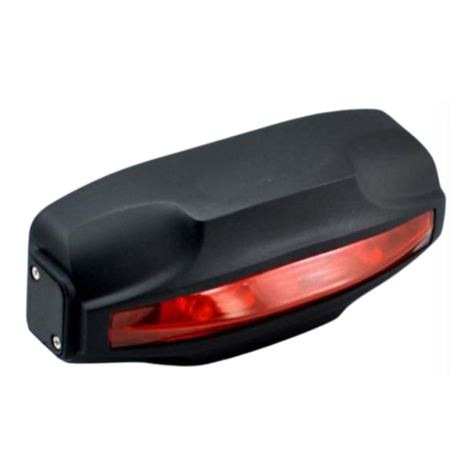
Gainbridge
Gainbridge GT3018 user guide
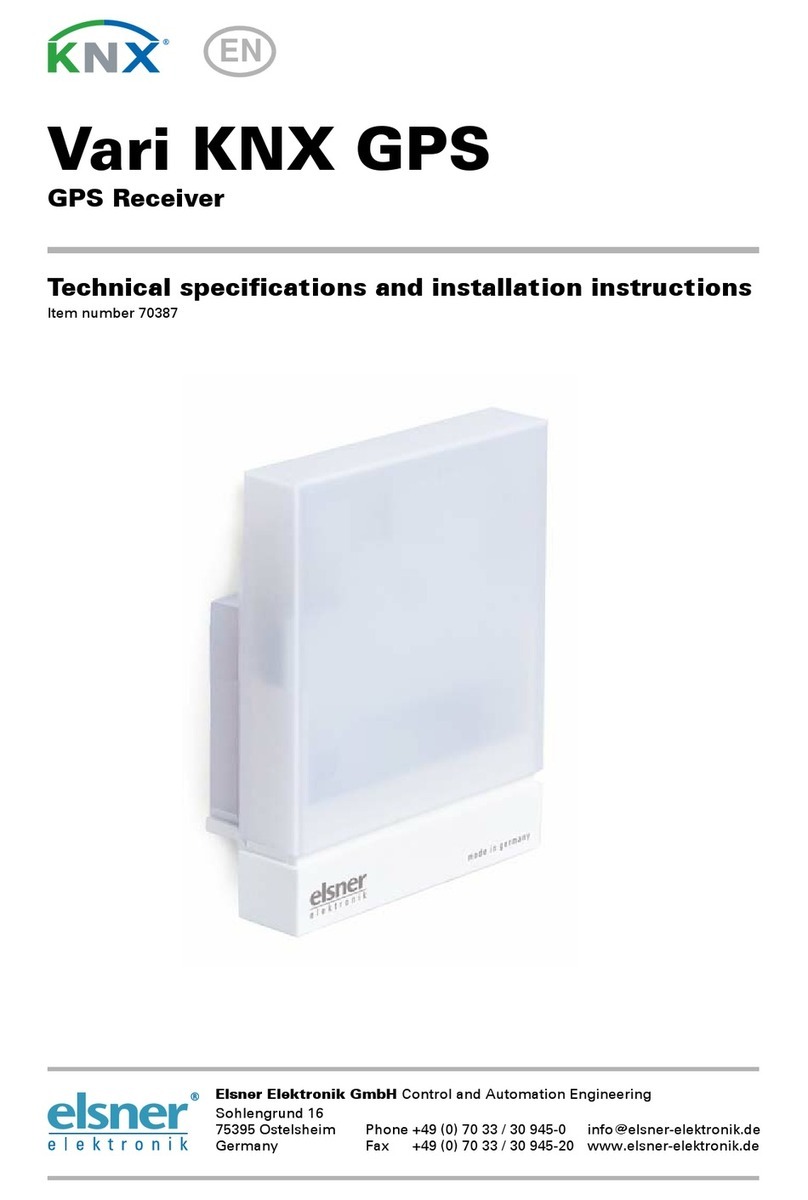
elsner elektronik
elsner elektronik Vari KNX GPS Technical specifications and installation instructions
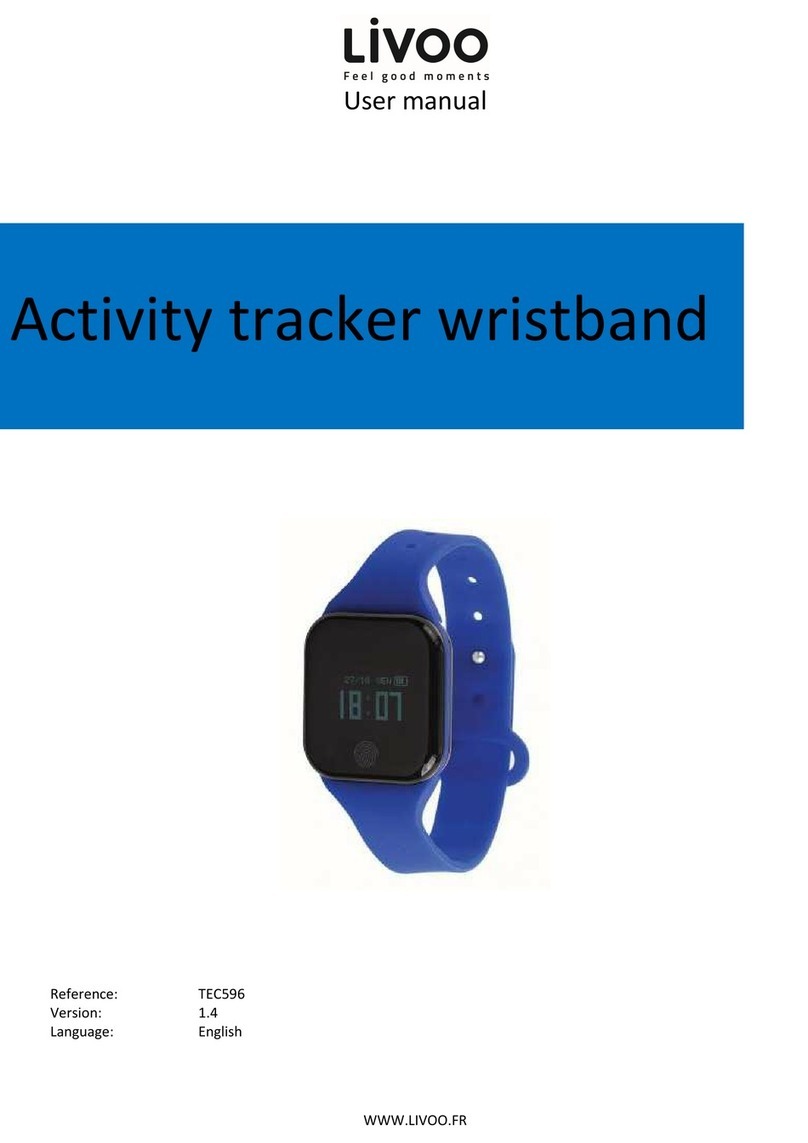
Livoo
Livoo TEC596 user manual
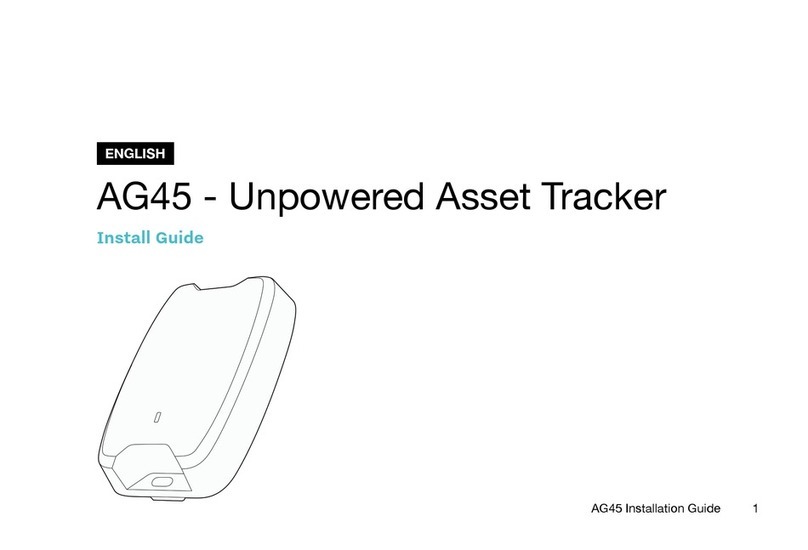
Samsara
Samsara AG45 install guide
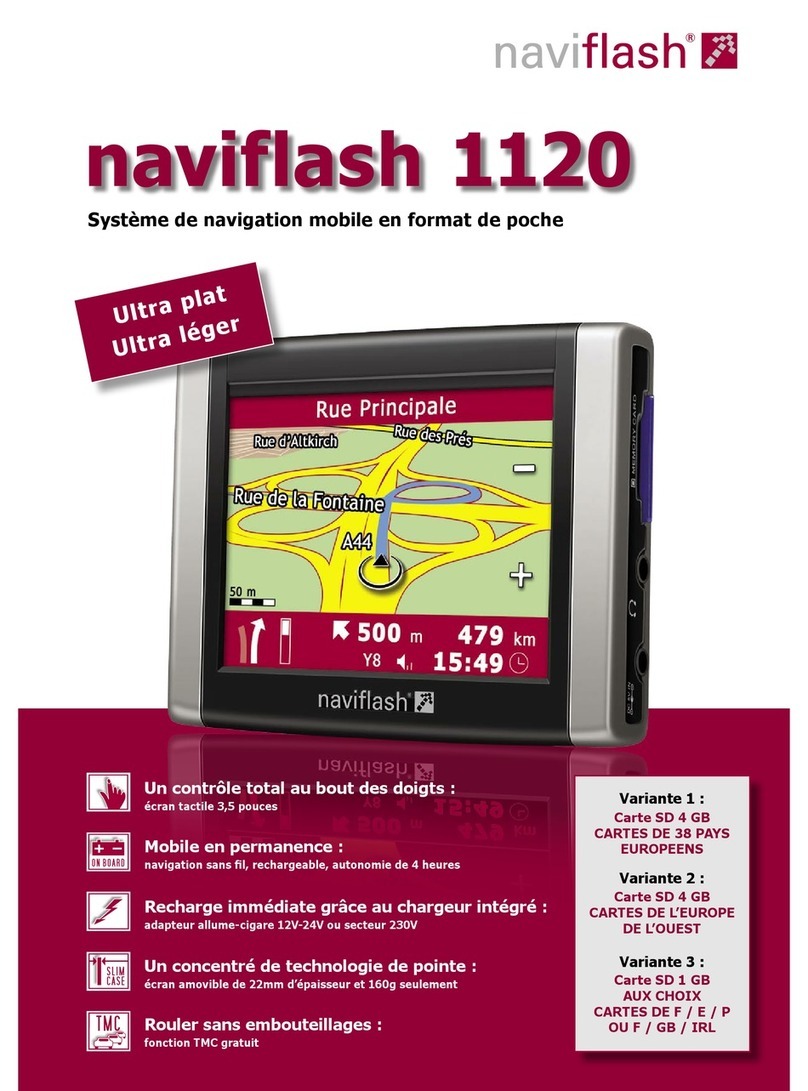
naviflash
naviflash Naviflash 1120 specification
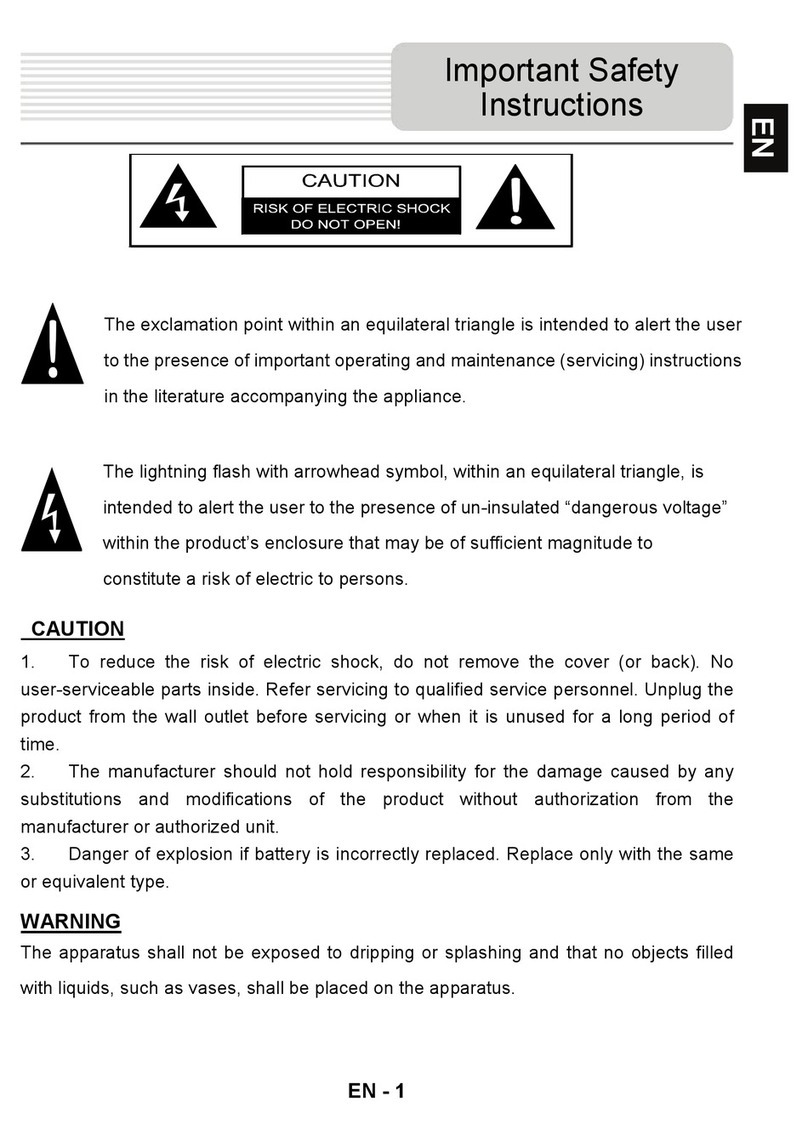
Prestigio
Prestigio Geovision 5330 BTFMTV user guide
